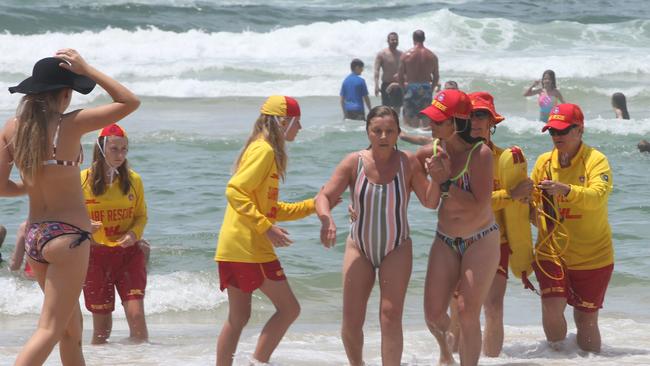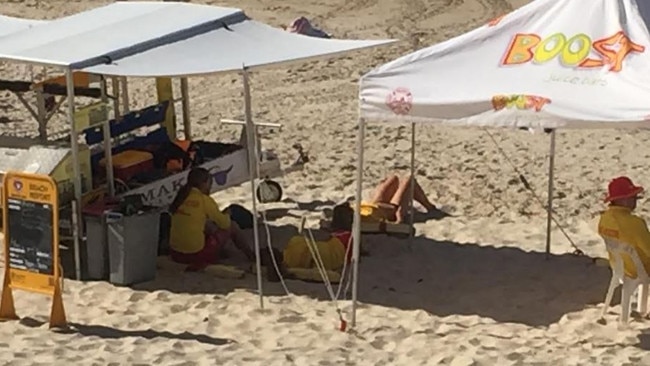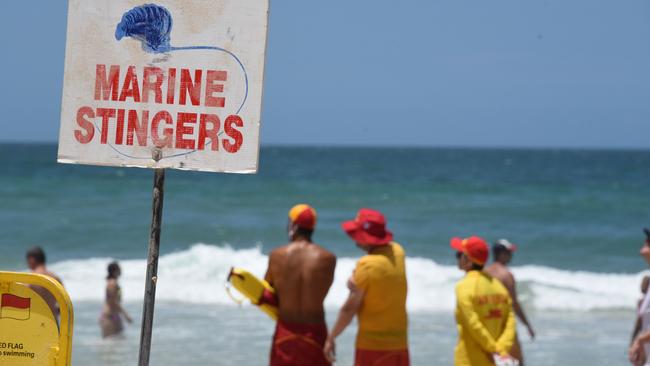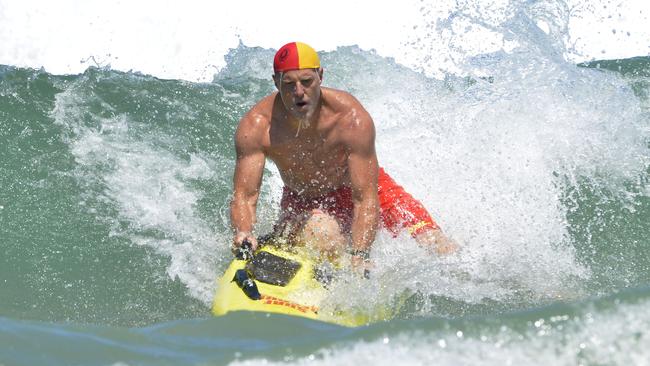Paul Weston: How surf lifesaving puts its head in the sand when complaints roll in
A photograph has surfaced showing patrol members relaxing and sunbaking on the beach, with one senior clubbing remarking: “Our finest on patrol.”
Opinion
Don't miss out on the headlines from Opinion. Followed categories will be added to My News.
A PHOTOGRAPH has emerged, showing patrol members relaxing and sunbaking on sand. This is the divide between volunteers and surf stars, a line in the sand moment for Queensland Surf Life Saving.
Late last month complaints surfaced about $310,000 of taxpayer money being spent on a Li-Fi project. A new toy, a 20kg box, is being trialled on the Gold Coast to provide internet coverage between the flags.

Clubbies were furious about not being consulted by the body’s marketing department. What followed was an explosive letter sent to and tabled by Queensland Surf Life Saving’s board.
The allegations included a lifesaver being drunk on duty, a member driving SLSQ vehicles while unlicensed, sexual harassment and staff kickbacks. The marketing department was “out of touch” with patrol members, and the lifesaving committee which directs funding to surf hot spots was accused of being more concerned about surf sports.
OTHER NEWS:
Shock good news for NightQuarter
Proctor expects brutal showdown with Titans mates
How to have a ‘fang-tastic’ Valentine’s Day
The response by SLSQ was that police had been contacted and legal advice sought. The letter was considered a “threat”. The focus since has been on tracking down “the leak”.

Importantly, SLSQ in a statement referred to the “unsubstantiated claims”.
How is it possible to conclude allegations are unsubstantiated if those claims are yet to be investigated?
After SLSQ’s response, a wave of complaints arrived on my desk.
Concerned clubbies called, some from the Gold Coast, others from the Sunshine Coast. Enough leaks to sink a surf boat before reaching the buoys.
A major point of contention was patrol hours — bronze medallion nipper parents have to be on duty 10 hours a season, surf sport competitors need 25 hours, yet members must complete 45 hours of patrols.

Then the photograph arrived from the Sunshine Coast.
“Our finest on patrol,” a senior clubbie wrote.
Further allegations surfaced of a surf star posting photographs inside a change room, an employee having sex with a junior member, and youths having consensual sex with an older female patrol member and then posting photographs on social media.
SUBSCRIBE TO THE GOLD COAST BULLETIN — JUST $1 FOR THE FIRST 28 DAYS
A common theme is that complaints are dealt with at a branch level, hushed up and some of the complainants later cop the abuse and bullying.
“There’s a lack of confidence in the complaints system. The victims feel they will be treated worse than the abuser,” a senior Coast clubbie says.

“The general consensus is SLSQ fails to listen to them. It’s all about employing media and marketing. There’s a lack of communication between beach reality and bureaucratic decision making.’’
The SLSQ annual report records the organisation has almost $32 million in revenue.
Wages account for $16 million, up from $12.5 million in 2015. Members are tracking that increase.
Queensland has 32,000 surf lifesavers. They complete about 700,000 interventions on our beaches each year, saving us poor swimmers and our kids from injury or worse.
But an internal review and audit of not just finances but management culture is needed.
An old salt put it much more eloquently. He told mates: “We were a helluva lot better off when we had the chook raffle on Saturday afternoon.”


